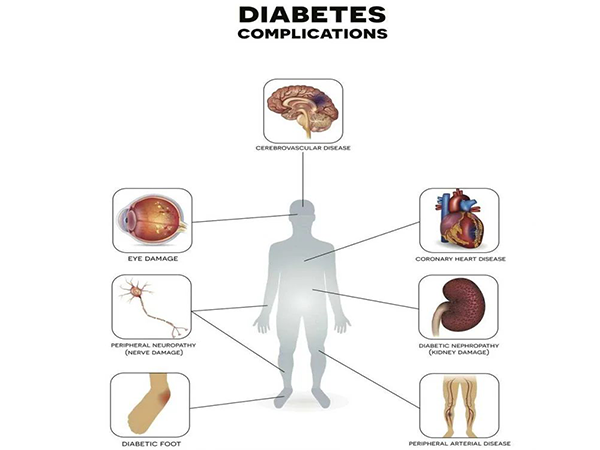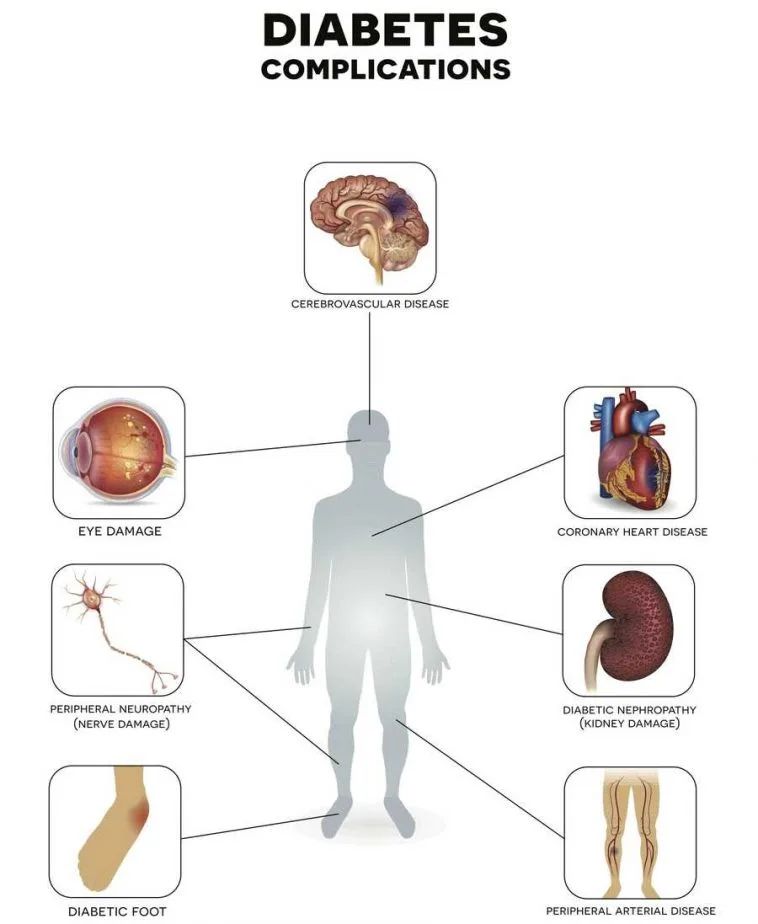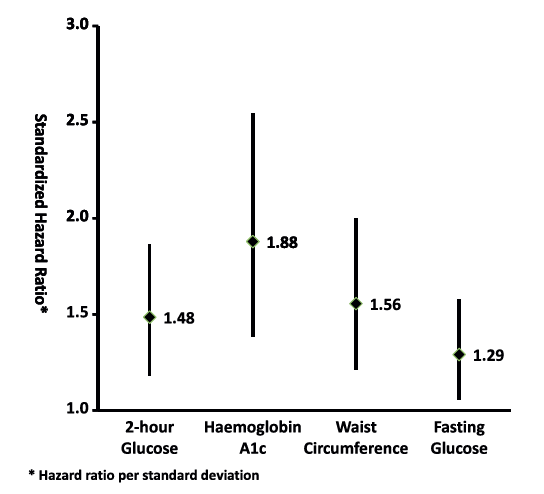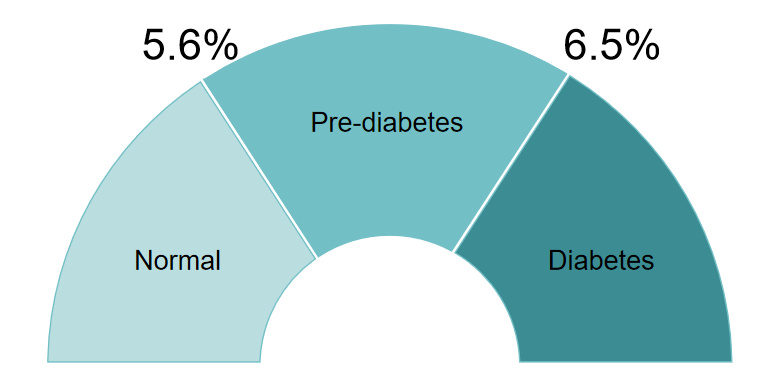Starter 's HbA1c Monoclonal Antibody Pair: Providing Superior Raw Materials for Diabetes Research and Clinical Diagnosis
05 Aug 2025
by AntBio

Diabetes
Diabetes Mellitus is a chronic metabolic disorder characterized by insufficient insulin secretion, insulin resistance, or both. Its primary symptoms include polydipsia (increased thirst), polyuria (increased urination), polyphagia (increased hunger), and weight loss. It can lead to a variety of complications, such as blindness, renal failure, myocardial infarction, stroke, and lower-limb amputation.
With the global population aging, changes in lifestyle, and increasing prevalence of obesity, the number of people with diabetes is on the rise. According to statistics from the International Diabetes Federation (IDF), as of 2023, approximately 537 million adults worldwide have diabetes, and this number is projected to increase to 700 million by 2045, posing a significant challenge to global public health systems.

Figure 1: The Dangers of Diabetes
Diagnosis of Diabetes
Diabetes can be diagnosed through plasma glucose tests (such as Fasting Plasma Glucose, FPG) and glycated hemoglobin (HbA1c) tests. Studies have compared the predictive power of HbA1c and FPG for diabetes incidence in a cohort of 530 non-diabetic Chinese individuals. The results indicated that HbA1c has stronger risk prediction capabilities, with higher hazard ratios and better sensitivity and specificity.

Figure 2: Standardized Hazard Ratios for 2-Hour Postprandial Glucose, HbA1c, Waist Circumference, and Fasting Plasma Glucose
Glycated Hemoglobin (HbA1c)
Glycated Hemoglobin (HbA1c, GHb): HbA1c is the product of a non-enzymatic, irreversible reaction between hemoglobin in red blood cells and glucose in the serum. Hemoglobin consists of two α subunits (α2) and two other types of subunits (β2, δ2, or γ2), categorized into HbA (α2β2), HbA2 (α2δ2), and HbF (α2γ2), with HbA accounting for 97% of total hemoglobin.
HbA1c specifically refers to the Amadori product formed by the reaction of glucose with the N-terminal valine residue of the β-chain of HbA. It is the predominant form of glycated HbA1, accounting for approximately 80% of glycated HbA1. HbA1c is structurally stable and its concentration varies with the red blood cell life cycle, making it a reliable indicator for monitoring glycated hemoglobin levels and reflecting the average blood glucose levels over the past 2 to 3 months.
Diagnostic and Prognostic Potential of HbA1c
The American Diabetes Association (ADA) and the World Health Organization (WHO) have established HbA1c as a diagnostic criterion for diabetes: an HbA1c level of ≥6.5% confirms a diagnosis of diabetes.
In addition to serving as a diagnostic indicator, HbA1c can also be used for diabetes screening: an HbA1c level between 5.6% and 6.5% indicates a significantly increased risk of diabetes. An HbA1c level of 5.5% suggests that hemoglobin in the blood has reached glucose saturation, while levels below 5.6% indicate good blood glucose control over the past 2 to 3 months.
Cardiovascular disease is the leading cause of death in diabetic patients, and HbA1c is a good predictor of cardiovascular disease incidence and mortality in diabetic patients, with predictive power superior to that of FPG/RPG. Microvascular complications are significantly associated with HbA1c levels: for every 1% reduction in average HbA1c, the risk of any diabetes-related endpoint decreases by 21%, the risk of diabetes-related death decreases by 21%, the risk of microvascular complications decreases by 37%, and the risk of myocardial infarction decreases by 14%.

Figure 3: HbA1c as a Diagnostic Criterion for Diabetes
Recommendations from the "Chinese Type 2 Diabetes Prevention and Treatment Guidelines (2020 Edition)"For patients with uncontrolled HbA1c or newly initiated diabetes treatment, it is recommended to test HbA1c at least once every 3 months. For patients who have achieved treatment goals, HbA1c can be tested once every 6 months. HbA1c testing also has some limitations: it reflects blood glucose levels over the past 2 to 3 months but does not capture blood glucose variability. In populations with abnormal red blood cell metabolism (such as in pregnancy, anemia) or certain pathological conditions (such as end-stage renal disease, liver disease), HbA1c testing may not be accurate.
HbA1c is an indicator that reflects the average blood glucose levels over the past 2 to 3 months and plays an important role in diabetes management. HbA1c testing is not only used for diabetes screening and diagnosis but also helps predict the risk of diabetes and its complications, serving as a reliable tool for assessing long-term blood glucose control.
S-RMab® Monoclonal Antibody Pair
Starter's highly sensitive and specific HbA1c monoclonal antibody pair provides high-quality raw materials for diabetes testing to global partners and offers more accurate and reliable diagnostic services to patients worldwide. Inquiries are welcome.
Product Information
| Gatalog Num | Product Name | Product Parameters | Price |
| S0B3223 | Hemoglobin Recombinant Rabbit mAb (SDT-193-39) | Host : Rabbit | $490 |
| Conjugation : Unconjugated | |||
| S0B3222 | Hemoglobin A1c (HbA1c) Recombinant Rabbit mAb (SDT-192-53-1) | Host : Rabbit | $490 |
| Conjugation : Unconjugated | |||
| S0B3221 | Hemoglobin A1c (HbA1c) Recombinant Rabbit mAb (SDT-192-53) | Host : Rabbit | $490 |
| Conjugation : Unconjugated |




